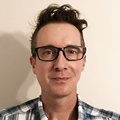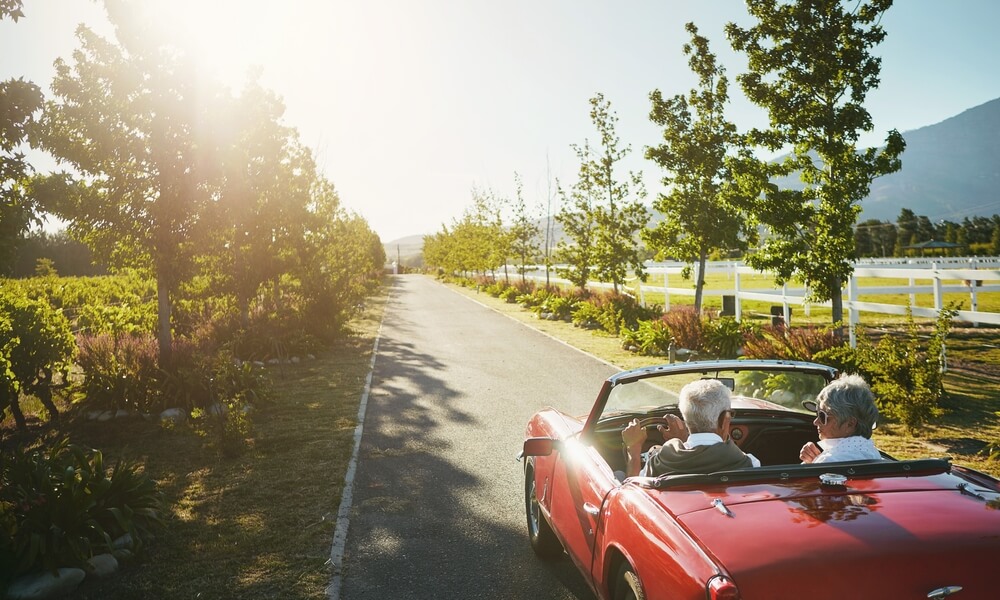
If you are not redirected within 30 seconds, please click here to continue.
Samedi: 10h – 16h HAE

If you are not redirected within 30 seconds, please click here to continue.
If you are not redirected within 30 seconds, please click here to continue.
Can a vehicle’s safety features get you cheaper car insurance?

Table of Contents
This article has been updated from a previous version.
Most modern vehicles include safety features that are designed to help drivers avoid getting into a collision. Long gone are the days when technologies such as lane departure warnings, rear-view cameras, and automatic braking systems were only features of high-end luxury vehicles. These driver assistance technologies have become commonplace in most vehicles — which might leave you wondering if driving a car, truck, or SUV that has them will reduce the cost of a car insurance policy.
What safety features does your vehicle need?
There are a broad range of safety features your car may have onboard – some are mandatory, others are not. According to the Canada Motor Vehicle Safety Standards, all private passenger vehicles must include:
- Airbags
- Anti-lock braking system
- Child seat anchors
- Electronic stability control
- Side-view mirrors
- Rear-view cameras
- Seatbelts
Which safety features are not mandatory to have?
Other automotive safety technologies that may be built into your car or truck but that are not required by law, include:
- Adaptive cruise control
- Automatic emergency braking
- Blind-spot alert
- Blind-spot view monitor
- Forward collision warning
- Lane departure warning
- Lane-keep assist
- Passenger exit warning
- Parking assist sensors
- Rear-view camera mirror
- Reverse braking assistance
- 360-degree camera
More sophisticated tech isn’t always safer
However, more features don’t necessarily lead to better safety. A study by Swedish journalists found that touchscreens in cars — which typically display rear-view camera displays, GPS and cellphone connectivity, as well as music and infotainment — were significantly less safe than touch buttons on a 2005 Volvo. This was largely due to the angle of the touchscreen, which took drivers’ eyes from the road and their higher potential for distraction, despite being more effective at keeping drivers off their phones.
On the other hand, advanced driver assistance and crash avoidance systems like some of the ones listed above are designed to help drivers avoid making mistakes on the road and getting into collisions. To that end, the benefit of having them is clear: They can reduce the risk of getting into a car accident.
Drivers themselves are split on whether newfangled safety features actually keep them safer: According to a 2019 survey by Desjardins Insurance, nearly half of Canadian drivers (48%) believed crash avoidance systems pose a risk to road safety, while 52% thought they help reduce the number of collisions.
Related: How a Car Accident Affects Your Insurance Premium
How do vehicle safety features affect car insurance premiums?
While having auto-theft prevention measures in a vehicle can result in premium discounts with some insurers, in general, a vehicle that has multiple safety features does not automatically mean you’ll get a cheaper auto policy.
That’s because the cost to repair or replace a car with them tends to be increasingly expensive. For example, if the rear bumper on a car with a rear-view camera and other sensors is damaged because of a rear-end collision, the cost of repairing the bumper may be as much as five times more expensive to fix than a bumper without those technologies.
Details about your vehicle’s safety technologies are included in its vehicle identification number (VIN). When an insurer looks at a car’s VIN, it will know what factory-built safety features it has, and that data is factored into the premium you get.
Insurance providers also use the CLEAR (Canadian Loss Experience Automobile Rating) system to assess the probability of a specific vehicle make and model being involved in a claim and what that claim will likely cost. A higher CLEAR number indicates a higher claims risk. A lower CLEAR number indicates a lower claims risk. Therefore, a car with anti-lock brakes, dual and side airbags, and anti-theft devices costs more to buy, but may have a lower CLEAR system rating that could result in a lower premium. A vehicle with minimal or basic loss-prevention or safety features is less expensive, but may have a higher CLEAR system rating, meaning an insurer may quote a higher premium for it.
Some insurance companies may offer discounts for some of these features, such as automatic emergency braking, but you should check with the insurer or your broker to be sure.
The Insurance Bureau of Canada (IBC) provides consumers with a view of how collision and other claims affect the cost of car insurance for specific makes and models manufactured between 2001 and 2019. It’s a useful guide for finding which vehicles available in the market may provide lower premiums.
But regardless of the discounts offered by your insurance provider, when you consider an at-fault collision on your driving record can increase your rate for about six years, it’s not difficult to understand how driver assistance technologies are helpful.
Looking ahead: Will vehicle safety technologies make car insurance cheaper over time?
As vehicle safety features become the standard over time in all makes and models, it is possible the cost to fix them if damaged will decrease. That will likely trigger car insurance companies to re-evaluate their pricing, especially considering the fact safety technologies help reduce the number of car accidents that occur.
In the meantime, keep safety top-of-mind when purchasing any vehicle. If the car you buy includes these technologies, ensure you understand the functionality of each feature and their limitations. Lastly, remember: though safety features are helpful, your full attention is essential whenever you drive to stay safe and prevent an accident.
Read next: Most and least expensive cars to insure by fuel type in 2023
Don't waste time calling around for auto insurance
Use RATESDOTCA to shop around, and compare multiple quotes at the same time.
How do vehicle safety features affect car insurance premiums?
Whereas having auto-theft prevention measures in a vehicle can result in premium discounts with some insurers, in general, a vehicle that has multiple safety features does not automatically mean you’ll get a cheaper auto policy. That’s because the cost to repair or replace a car with them tends to be increasingly expensive. For example, if the rear bumper on a car with a rear-view camera and other sensors is damaged because of a rear-end collision, the cost of repairing the bumper may be as much as five times more expensive to fix than a bumper without those technologies.
Your vehicle’s safety technologies are included in its vehicle identification number (VIN). When an insurer looks at a car’s VIN, it will know what factory-built safety features it has, and they are factored into the premium you get.
Insurance providers also use the CLEAR (Canadian Loss Experience Automobile Rating) system to assess how likely a specific vehicle will be involved in a claim and what that claim will likely cost. A higher CLEAR number indicates a higher claims risk. A lower CLEAR number indicates a lower claims risk. Therefore, a vehicle with anti-lock brakes, dual and side airbags, and anti-theft devices costs more to buy but may have a lower CLEAR system rating that could result in a lower premium. A vehicle with minimal or basic loss-prevention or safety features is less expensive, but may have a higher CLEAR system rating, meaning an insurer may quote a higher premium for it.
Some insurance companies may offer discounts for some of these features, such as automatic emergency braking, but you should check with the insurer or your broker to be sure.
The Insurance Bureau of Canada (IBC) provides consumers with a view of how collision and other claims affect the cost of car insurance for specific makes and models manufactured between 2001 and 2019. It’s a useful guide for finding which vehicles available in the market may provide lower premiums.
What are the benefits of driving a vehicle with advanced safety features?
Advanced driver assistance and vehicle safety technologies are designed to help drivers avoid making mistakes on the road and getting into collisions. From that perspective, the benefit of having them is clear: They can reduce the risk of getting into a car accident. And when you consider an at-fault collision on your driving record can jack up your rate for about six years, it’s not difficult to understand how driver assistance technologies are helpful.
Looking ahead: Will vehicle safety technologies make car insurance cheaper over time?
As vehicle safety features become the standard over time in all makes and models, it is possible the cost to fix them if damaged will decrease. That will likely trigger car insurance companies to re-evaluate their pricing, especially considering the fact safety techologies help reduce the number of car accidents that occur.
In the meantime, keep safety top-of-mind when purchasing any vehicle, and if the car you buy includes these technologies, ensure you understand the functionality of each feature and their limitations. Remember, though these technologies are helpful, your full attention is essential whenever you drive to stay safe and prevent an accident.
Get money-saving tips in your inbox.
Stay on top of personal finance tips from our money experts!









